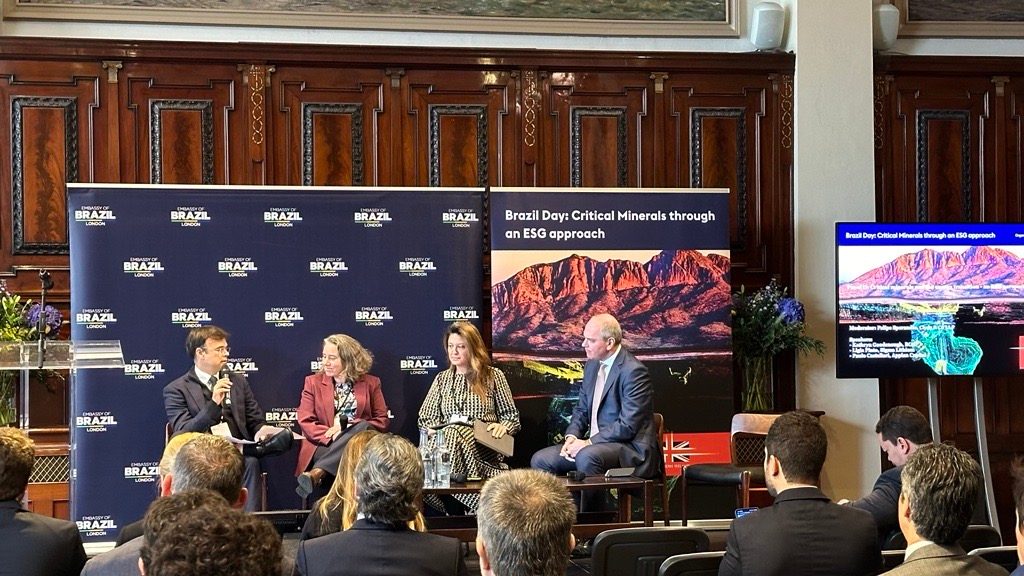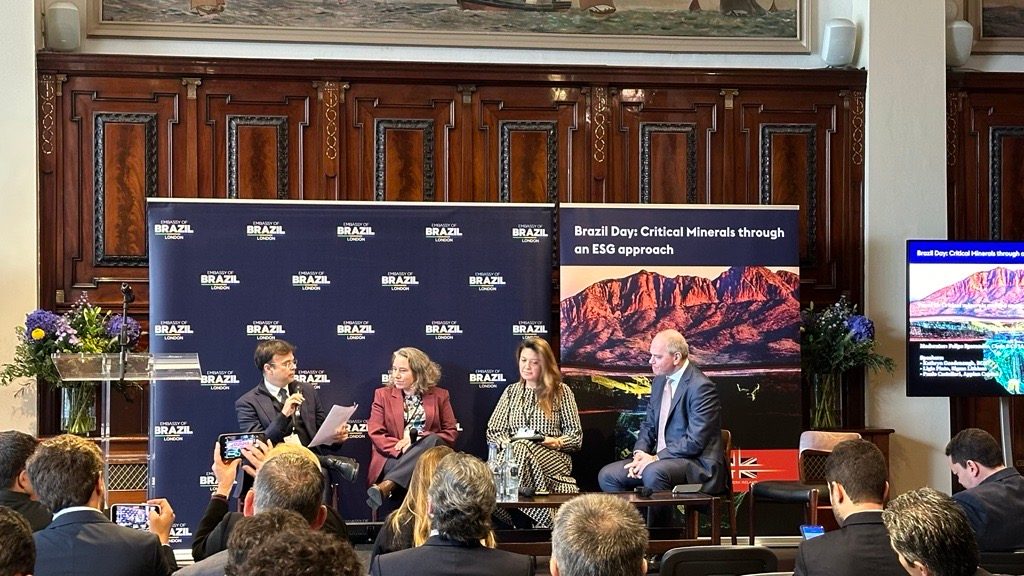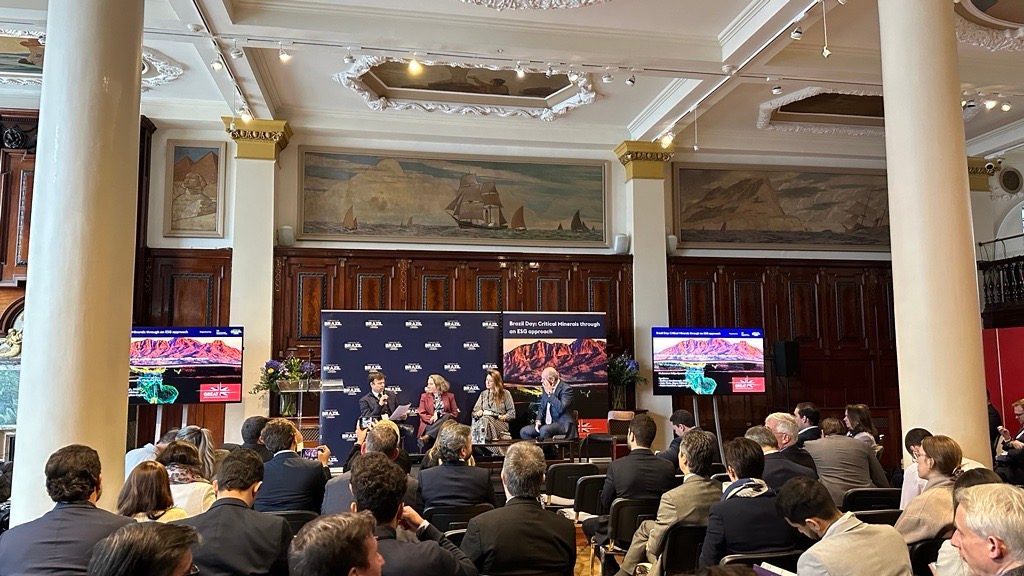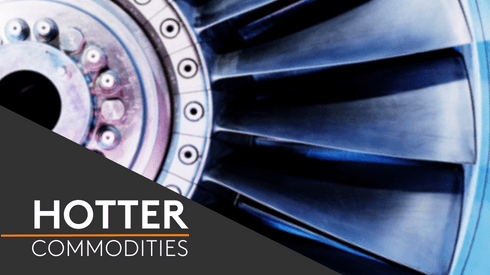As China tightens its grip on critical mineral exports, Brazil may have an opportunity to position itself as a key alternative supplier. With vast reserves of manganese, graphite and other essential minerals, the South American nation is launching ambitious government initiatives and attracting significant corporate investments to expand its production capacity and meet global demand.
Among these is Brazil’s first fund to support critical minerals, backed by Vale and Brazil’s development bank BNDES, announced this month. A consortium formed by JGP Asset Management, BB Asset and Ore Investments was selected to manage the 1 billion Reais ($184 million) private equity fund supporting research and exploration of strategic minerals needed for the energy transition.
China’s export crackdown
Last year, China’s Ministry of Commerce imposed restrictions on gallium, germanium and graphite. These moves reflect growing geopolitical tensions over critical minerals essential for the defense, technology and energy sectors.
With recent restrictions imposed by China on critical minerals, Brazil has the potential to take on a more significant role, according to panelists at a seminar on critical minerals hosted by the UK Department for Business & Trade and the Embassy of Brazil in London on Thursday October 3.
“If you look at where China is dominant, Brazil produces various elements,” Kathryn Goodenough, Principal Geologist & International Lead at the British Geological Survey, said. “Graphite is produced in Brazil… there are many opportunities for the development of supply chains that do not go through China.”
China’s export controls have disturbed supply for the critical materials, and Fastmarkets has assessed a significant price disparity for gallium and germanium in the Chinese versus European markets.
Fastmarkets’ price assessment for gallium 99.99% Ga min, in-whs Rotterdam was $500-550 per kg on Friday October 4, unchanged from September 27. This compares with the assessment for gallium 99.99% Ga min, in-whs China at 2,650-2,750 yuan ($379-393) per kg on September 27, showing a substantial premium for material in Europe.
And Fastmarkets’ price assessment for germanium 99.999% Ge, in-whs Rotterdam was $2,700-3,100 per kg on October 4, also unchanged from September 27. This contrasts with the assessment for germanium 99.999% Ge min, in-whs China at 18,000-18,500 yuan ($2,573-2,644) per kg on September 27.
The restrained exports from China since the controls were implemented have kept supplies tight in Europe, supporting higher prices there.
Brazil’s critical minerals landscape
Brazil has rapidly increased its production of battery raw materials. This year Serra Verde started commercial production of mixed rare earth concentrate (MREC) in Brazil. In May 2023, Brazil launched the Lithium Valley Initiative, aimed at attracting investments and streamlining development in the lithium mining and processing industries. This collaborative effort between the government and the private sector is designed to increase production of environmentally sustainable “Green Lithium” while advancing social development goals in the Vale do Jequitinhonha region.



Caption: Felipe V. Sperandio, Partner at Clyde & Co, moderates a panel discussion with Kathryn Goodenough, Principal Geologist & International Lead at the British Geological Survey; Ligia Pinto from Sigma Lithium and Paulo Castellari, CEO at Appian Capital
The US has also recognized Brazil’s potential as a critical minerals partner. A potential critical minerals agreement (CMA) between the US and Brazil could support US critical mineral needs, while also countering Chinese influence in the region.
Such an agreement could leverage Brazil’s significant reserves of graphite, nickel and manganese, which align well with US requirements. But to make such an agreement feasible, Brazil would need to address environmental concerns and streamline its licensing approval process for mining projects.
According to Goodenough, Brazil is one of the few countries with the potential to produce all key battery raw materials, naming nickel, graphite, lithium, manganese and cobalt.
“Brazil is also one of the world’s largest producers of graphite and has significant resources of manganese,” she said. “It is also rapidly increasing its lithium production and has substantial manganese resources.”
But, she said, in recent years “entering this market has been challenging due to its dominance by a single country.”
Graphite prices in China and the West diverged in the final months of 2023, owing both to China’s export control on graphite, introduced in December, and rising freight rates to Europe.
Fastmarkets’ assessed price for graphite flake 94% C, -100 mesh, cif Europe was $600-700 per tonne on October 3, flat from the session before but 4% higher than the $600-650 per tonne that was assessed in the final session of 2023, on December 28.
Prices in Europe peaked at $650-750 per tonne from June 13 to September 5, but have since softened on low demand and declining freight rates.
And the most recently assessed graphite flake 94% C, -100 mesh, fob China was $450-469 per tonne on September 26, down 3.16% from $460-489 per tonne a week earlier, on September 19.
The price spread between the regions has been credited to rising freight rates, falling Chinese prices, and limited export flows from China. The ex-China graphite supply chain has been boosted by the export control, despite China’s overcapacity.
And Fastmarkets’ newly launched graphite flake, 94%, -100 mesh, cif US ports price assessment showed a further premium to the Chinese price in its first assessment on October 3 at $700-850 per tonne.
Looking for more graphite news, price and analysis of the innovative world of synthetic and natural graphite? Discover graphite prices, news and forecasts all in one space. Click here to find out more.





